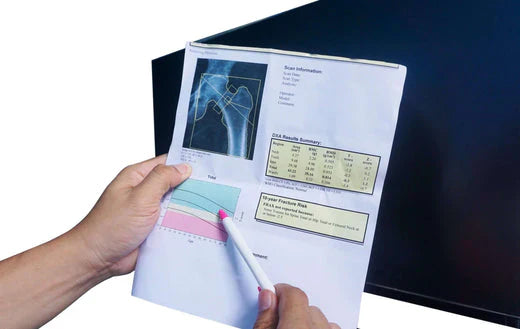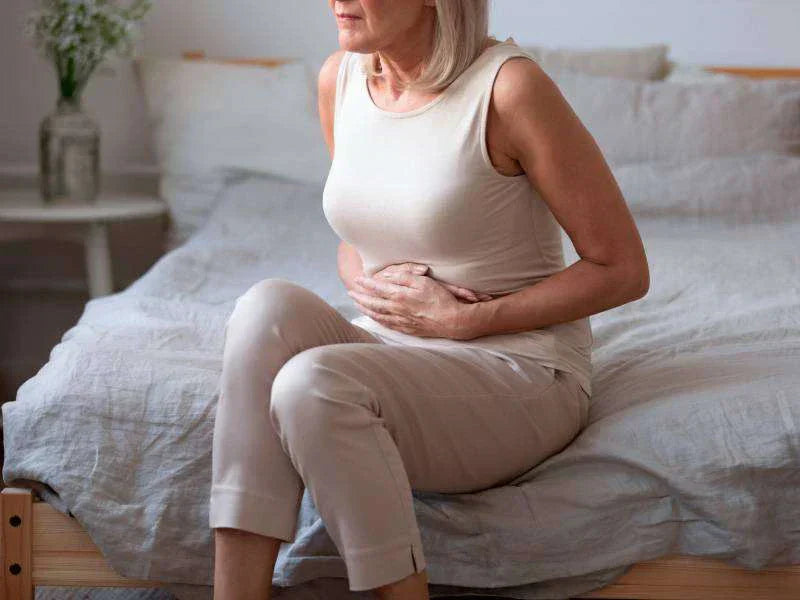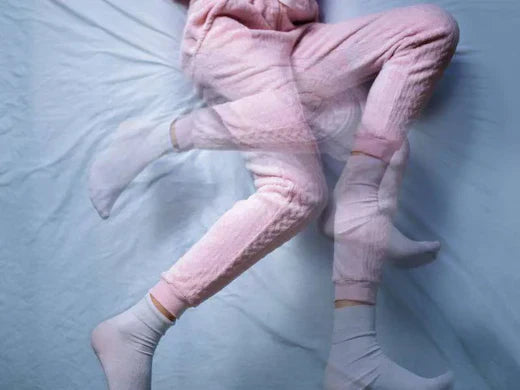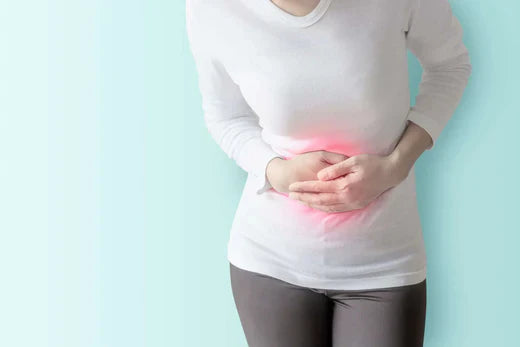Both menopause and post menopause are periods in every woman's life when new challenges and experiences occur. For some women, they can develop bone conditions such as osteopenia and osteoporosis. Osteopenia is the loss of bone mineral density. This can be diagnosed by medical equipment such as a densitometer (Varacallo et al., 2022). Osteoporosis, on the other hand, is the marked and lasting loss of bone mineral density, in which the internal structure of the bones is altered and weakened by the formation of pores. All this predisposes bones to fractures (Porter and Varacallo, 2022). Understanding this, it is clear that both concepts are connected. In fact, osteoporosis is nothing more than the progression of osteopenia (Compston et al., 2019). Moreover, both osteopenia and osteoporosis can occur during the menopause transition. Here, we explain everything you need to know.
Osteopenia and osteoporosis: what is their relationship with menopause?
Have you wondered why these conditions can appear during menopause? Well, although it is somewhat complex, we can summarise the main reasons why (Hoffman et al., 2020; Karlamangla et al., 2018):
- During perimenopause there is a decline in the production of hormones such as oestrogen, which is heightened until post menopause.
- Oestrogen helps to regulate bone resorption, a process in which older parts of bone are removed. Thus, the removed bone releases minerals that are used in the formation of a new bone.
- In menopause, bone loss is accelerated without being compensated by the formation of new bone.
- This occurs most markedly in the early years of menopause when it usually presents as osteopenia.
- Years after the end of menopause, osteopenia can lead to the development of osteoporosis.
It is worth noting that not all women that are diagnosed with osteopenia and osteoporosis have significant symptoms to justify a treatment. For this reason, close monitoring is now recommended to detect when treatment is warranted.

Signs and symptoms
Both conditions (in the early years of experiencing them) can appear without signs or symptoms. But as they develop, especially osteoporosis, the patient may feel (Li et al, 2010; Mayo Clinic, 2021):
- Postural changes (slouching).
- Back pain.
- Discomfort or pain in legs or arms.
- Persistence of symptoms for several months.
- Decrease in height over time.
- There could be fractures of the bones more easily than expected.
The presence of fractures would imply the progression of osteoporosis. Therefore, an early diagnosis is important.
How to diagnose them?
For early detection of osteopenia or diagnosis of osteoporosis, the following methods can be used (Lewiecki, 2021):
- Dual energy X-ray absorptiometry (DEXA) or bone densitometry. It measures bone mass and detects the presence of osteopenia and osteoporosis. The World Health Organization (WHO) recommends this as a diagnosis test.
- Echosonography. The effectiveness of this test, which measures bone density by means of waves, is currently being studied.
- Computed tomography. This is like densitometry since tomographic.
It should be noted that only a health professional can arrange for these tests to be undertaken so please speak to your healthcare professional.
How to prevent osteopenia and osteoporosis during menopause?
It is important for any woman going through the menopause transition (including early menopause) to have her bones closely monitored by her health care provider. In addition, the following lifestyle changes are recommended (Rosen, 2022):
- Maintain a balanced diet that provides protein, fats, carbohydrates, vitamins, and minerals.
- Before menopause, it is necessary to ensure an intake of 1000 milligrams of calcium per day; after menopause, at least 1200 milligrams. In addition, at least 20 micrograms of vitamin D are needed. The source of vitamin D and calcium should be the food you ingest, but supplements can also be used.
- Avoid alcohol and smoking.
- Strengthen bones and muscles by resistance exercise (such as lifting weights). You can also jog, run or fast walk for at least 30 minutes, three times a week.
- If necessary, other climacteric complications should be treated with appropriate menopausal treatment. This may include Hormone replacement therapy: what is it and when is it recommended hormone replacement therapy (Hoffman et al., 2020).
Now you know what osteopenia and osteoporosis are, their signs and symptoms, ways to diagnose them, and recommendations to help prevent them. Do not hesitate to take advantage of this knowledge to live your day-to-day life to the fullest during this new and exciting life stage!
References
Compston, J.E., McClung, M.R., & Leslie, W.D. (2019).
Osteoporosis. The Lancet, 393(10169), 364–376. https://pubmed.ncbi.nlm.nih.gov/30696576/ Hoffman, B. L., Schorge, J. O., Halvorson, L. M., Hamid, C., Corton, M., & Schaffer, J. I. (2020). Williams gynecology (4th ed.). McGraw-Hill. ISBN: 978-1-260-45686-8 Karlamangla, A. S., Burnett-Bowie, S. M., & Crandall, C. J. (2018).
Bone Health During the Menopause Transition and Beyond. Obstetrics and gynecology clinics of North America, 45(4), 695–708. https://doi.org/10.1016/j.ogc.2018.07.012 Lewiecki, E. M. (2021).
Osteoporosis: Clinical Evaluation. En K. R. Feingold (Eds.) et. al., Endotext. MDText.com, Inc. Obtenido de: https://www.ncbi.nlm.nih.gov/books/NBK279049/ Li, S., He, H., Ding, M., & He, C. (2010).
The correlation of osteoporosis to clinical features: a study of 4382 Female Cases of a Hospital Cohort with musculoskeletal symptoms in Southwest China. BMC Musculoskeletal Disorders, 11(1). https://bmcmusculoskeletdisord.biomedcentral.com/articles/10.1186/1471-2474-11-183 Mayo Clinic. (2021).
Osteoporosis. https://www.mayoclinic.org/diseases-conditions/osteoporosis/symptoms-causes/syc-20351968 Rosen, H. (2022).
Patient education: Osteoporosis prevention and treatment (Beyond the Basics). UpToDate. Obtenido de: https://www.uptodate.com/contents/osteoporosis-prevention-and-treatment-beyond-the-basics Porter, J.L., & Varacallo, M. (2022).
Osteoporosis. StatPearls Publishing. https://www.ncbi.nlm.nih.gov/books/NBK441901/ University of Washington. (2017).
Osteopenia. https://rad.washington.edu/about-us/academic-sections/musculoskeletal-radiology/teaching-materials/online-musculoskeletal-radiology-book/osteopenia/ Varacallo, M., Seaman, T.J., Jandu, J.S., & Pizzutillo, P. (2022). Osteopenia. StatPearls Publishing. https://www.ncbi.nlm.nih.gov/books/NBK499878/
You May Also Like

JOIN US AND GET 10% OFF
Sign up to our newsletter to access free resources, advice and support.















